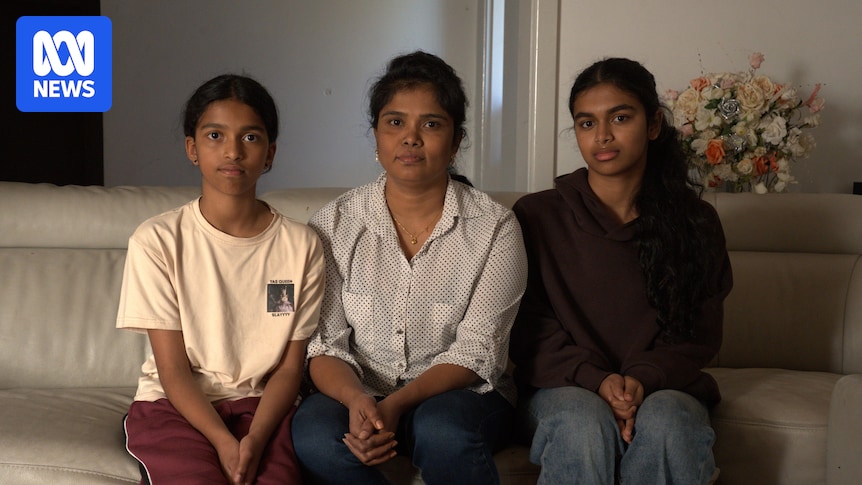
Rathy Barthlote and her family find themselves entangled in a complex situation that highlights the challenges faced by many asylum seekers in Australia. Her 11-year-old daughter, Lolitta, born in Australia, became a citizen at the age of 10, enjoying full rights. In stark contrast, Ms. Barthlote, her husband, and their 16-year-old daughter, Logitha, remain asylum seekers with limited rights, having lived in Australia since 2014 as their refugee claims navigate the system.
“Their friendships, schooling, and sense of belonging are all here,” Ms. Barthlote expressed. “One child has everything, the other child is worried about her future.”
Their predicament underscores a broader issue affecting approximately 8,000 asylum seekers who arrived in Australia between 2012 and 2013. These individuals, like the Barthlote family, are caught in a bureaucratic limbo, with many living on bridging visas. While some, like Ms. Barthlote’s family, have work and school rights, others do not, exacerbating their uncertainty and anxiety.
Calls for Resolution
Former Coalition immigration minister Alex Hawke has publicly urged the government to address the status of asylum seekers left in limbo. “People have been here a long time. And the reality of their condition is that they will be staying here,” Mr. Hawke stated. “We now have to deal with the actual reality of the situation.”
Despite the previous Coalition government’s failure to resolve the issue, Mr. Hawke now advocates for action, emphasizing the need for the Labor Party to commit to resolving these longstanding issues. “Some of those are tricky, but a lot of them are now no longer tricky,” he added.
Historical Context and Current Challenges
The Barthlote family’s journey began in 2013 when they arrived by boat, just as the Abbott government introduced the ‘Fast Track’ system to expedite the processing of asylum claims. This system, however, limited procedural rights for boat arrivals compared to other asylum seekers, a move criticized by Labor as unfair. Upon gaining power, Labor abolished the system, yet many of its resultant problems remain unresolved.
Ms. Barthlote’s case exemplifies the prolonged struggles faced by many. After her initial refugee claim was rejected by the Fast Track system’s Immigration Assessment Authority (IAA), she appealed and won, only for the IAA to reject her claim again. Her appeal has been pending since mid-2019, leaving her family in a state of uncertainty for over a decade.
Comparative Outcomes
Among those affected by the Fast Track system is Priya Nadesalingam, a Tamil asylum seeker whose case gained national attention. Both Ms. Barthlote and Ms. Nadesalingam arrived on the same boat in 2013, fleeing Sri Lanka’s civil conflict. While the Nadesalingam family was eventually granted permanent residency after a community campaign, Ms. Barthlote and many others continue to face an uncertain future.
Implications for Families and Communities
For the Barthlote family, life in Melbourne’s western suburbs is marked by both integration and insecurity. Ms. Barthlote works in aged and disability care, while her husband holds two jobs. Their daughter Logitha, in Year 11, dreams of studying forensic science at university. However, if she remains on a bridging visa, she will face higher tuition fees as a foreign student, unable to access the student loans scheme, HECS.
“She wants to have a dream but she can’t get that dream,” Ms. Barthlote lamented. Unlike her sister, Logitha’s future is fraught with obstacles, from limited travel options to restricted access to healthcare and civic participation.
Government Response and Future Prospects
Since assuming power in 2022, the Labor government has initiated efforts to transition around 20,000 individuals from temporary protection visas to a “permanent visa pathway.” However, the fate of the remaining 8,000 asylum seekers remains uncertain. The home affairs minister continues to use ministerial intervention on a case-by-case basis, a process criticized for its lack of transparency.
Sanmati Verma, legal director at the Human Rights Law Centre, stated, “There is no clear rationale or consistency as to who is afforded this treatment and who is not.”
Ms. Verma described the current policy as “cruel,” advocating for the recognition of long-term residents as part of the community and the granting of permanent visas to reflect that reality.
In response, a spokesperson for the Home Affairs Department reiterated the expectation for those who have exhausted all legal avenues to depart Australia voluntarily, with assistance available for their departure. However, those with new, credible protection claims may request Ministerial Intervention.
For Ms. Barthlote and her family, the desire to secure a future in Australia is paramount. “We are part and parcel of this community. We have no home to return to in Sri Lanka,” she affirmed, capturing the sentiment of many who have made Australia their home.





